Health
It's a new year in 2023 now. We have tons of events going on in the world. For thousands of years in human history, health always remains an intrinsic study of life. Health is not just about food and exercise. It is about mental health, the growth of communities, addressing economic disparities in many communities, and other poignant or important issues of the world. It can focus also on confidence, emotional intelligence, and how we treat each other with dignity and respect. With the advent of more advanced technologies, the Internet, and newer inventions addressing needs, we have seen an acceleration of the consciousness of people understanding health information. During the course of the 21st century, new concepts have readily spread surrounding health. Millions of people in the world (not just in America) are still suffering debilitating conditions from the coronavirus pandemic. The virus has harmed tons of people in the world, and the good news is that fewer people are getting it as compared to 2 years ago. Now, we see the rise of infants and young children with the flu and RSV. These illnesses should be taken seriously. We have real issues that we must deal with. One sad news is that the average American life expectancy fell from 77 to 76.4 years last year in 2022. These numbers are back in 1996. Dr. Steven Woolf, a professor of family medicine and population health at Virginia Commonwealth University said that the past quarter century of medical advances has been erased. The decline is based on low COVID-10 vaccination rates and the general health issues of Americans. COVID-19, heart disease, cancer, and other illness have killed many Americans. To reverse this trend, human beings need quality education, affordable housing, access to healthy food, the reduction of income inequality, and regulation of industries (many corporations promote dangerous products and pollute the Earth). The solutions are there, but the political will must exist too.
It is important to note that each person has a different biochemistry. What one form of a health program may work for one person will not work for other people. Also, it is important for people to gain wisdom from their doctors and their medical experts in getting the best advice available in developing an exercise regimen. Qualified, outstanding health experts are here for the reason to help, and their sage advice ought to be thoroughly appreciated. As for vegans and non-vegans, people should have the right to be vegan or not. Regardless, folks need to be careful and get healthy foods and healthy water in their systems to improve their lives. Like always, we believe in body positivity. That means that we know that beauty is diverse and not monolithic. There are beautiful people of many sizes and shapes. We reject dehumanizing a person based upon size, sex, color, or background. Over the course of many years, I see that human beings love me mentioning about health information, so I will continue to comment on health-related topics. Not to mention that we will promote healthy living too. People have the right to learn the truth, inspire people, help people, and go about to fulfill their own dreams and aspirations succinctly.
Plants and Herbs
Various plants including herbs have been used for medical purposes for thousands of years. Many herbs do work to help with human history. Other people promote pseudo-science for profit, so we have to be careful when dealing with medicinal herbs. Medicinal plants are used with the intention of maintaining health to be administered for a specific condition, or both, whether in modern medicine or in traditional medicine. The Food and Agriculture Organization estimated in 2002 that over 50,000 medicinal plants are used across the world. The Royal Botanic Gardens, Kew more conservatively estimated in 2016 that 17,810 plant species have medicinal use, out of some 30,000 plants for which any use of any kind is documented. In modern medicine, about one-quarter of the drugs prescribed to patients are derived from medicinal plants. They are rigorously tested too. Cinnamon has a long history of use in traditional medicine as a digestive aid. A 2018 review found evidence that ginger could decrease body weight in obese subjects and increase HDL-cholesterol. Although generally recognized as safe, ginger can cause heartburn and other side effects, particularly if taken in powdered form. It may adversely affect individuals with gallstones and may interfere with the effects of anticoagulants, such as warfarin or aspirin, and other prescription drugs.
Rosemary leaves are used as a flavoring in foods, such as stuffing and roast lamb, pork, chicken, and turkey. Fresh or dried leaves are used in traditional Mediterranean cuisine. They have a bitter, astringent taste and a characteristic aroma which complements many cooked foods. Herbal tea can be made from the leaves. When roasted with meats or vegetables, the leaves impart a mustard-like aroma with an additional fragrance of charred wood that goes well with barbecued foods. In amounts typically used to flavor foods, such as one teaspoon (1 gram), rosemary provides no nutritional value. Rosemary extract has been shown to improve the shelf life and heat stability of omega 3-rich oils which are prone to rancidity. Rosemary is also an effective antimicrobial herb.
*Now, there is the elephant in the room. What about vegans and vegetarians? The truth is that people have the right to be vegans, vegetarians, carnivores, omnivores, pescetarians, etc. in a free and open society. It is also important to recommend that those who are vegans and vegetarians have sufficient vitamin B12 and other nutrients (like zinc, calcium, vitamin D, iodine, iron, omega 3 fatty acid, etc.) if they voluntarily decide to go into that route. The truth is that tons of vegans, vegetarians, and non-vegans plus non-vegetarians live successful lives, live for a long time, and love the culture of healthy living. Vitamin B12 is very important to have as its deficiency can cause blood disorders and potentially irreversible neurological damage. So, vegans/vegetarians and non-vegans/non-vegetarians alike should have a properly planned diet rich in nutrients, vitamins, and other resources. So, we have to plan our health choices wisely. Like always, people should talk to their doctor or health professionals in making serious health-related matters in their own lives. People want to know what an ethical omnivore is. What is it? An ethical omnivore is a person who believes that human beings can eat meat, fish, animal products, etc., and take a consideration to take care of the environment at the same time. During the earliest times of human history, artifacts and pictures describe human beings eating plants and human beings eating various types of meat too. The nutrients of Vitamin B12, DHA (an essential omega 3 fatty acids), heme iron, vitamin D, and creatine are very important substances that human beings acquire all of the time. For me personally, I am a conscious omnivore. I know about healthy foods, and I realize that this is my choice. You have the right to follow your own health journey. Therefore, I will forever be an ethical omnivore.
Heart Disease
Heart disease or cardiovascular disease is one of the most important diseases in human history. Many people suffer from it to this very day, and tons of people have died from it. Cardiovascular disease (CVD) is a class of diseases that deal with the heart of blood vessels. CVD is also related to coronary artery diseases (CAD) like angina and myocardial infraction (i.e. a heart attack). Other CVDs include stroke, heart failure, hypertensive heart disease, rheumatic heart disease, cardiomyopathy, abnormal heart rhythms, congenital heart disease, valvular heart disease, carditis, aortic aneurysms, peripheral artery disease, thromboembolic disease, and venous thrombosis. With more research, we know that about 53% of all CVD deaths relate to dietary risk factors. Coronary artery disease, stroke, and peripheral artery disease involve atherosclerosis. This may be caused by high blood pressure, smoking, diabetes mellitus, lack of exercise, obesity, high blood cholesterol, poor diet, excessive alcohol consumption, and poor sleep, among other things. High blood pressure is estimated to account for approximately 13% of CVD deaths, while tobacco accounts for 9%, diabetes 6%, lack of exercise 6%, and obesity 5%. Rheumatic heart disease may follow untreated strep throat. Researchers say that up to 90% of CVD can be preventable. Prevention of CVD involves improving risk factors like healthy eating, exercise, not using tobacco, and limiting alcohol intake.
Treating risk factors like high blood pressure, blood lipids, and diabetes is also beneficial. Treating people who have strep throat with antibiotics can decrease the risk of rheumatic heart disease. The benefit of healthy people using aspirin involving heart disease is unclear. Cardiovascular diseases are the leading cause of death worldwide except in Africa. Together CVD resulted in 17.9 million deaths (32.1%) in 2015, up from 12.3 million (25.8%) in 1990. Deaths, at a given age, from CVD are more common and have been increasing in much of the developing world, while rates have declined in most of the developed world since the 1970s. Coronary artery disease and stroke account for 80% of CVD deaths in males and 75% of CVD deaths in women. Most cardiovascular disease affects older adults. In the United States, 11% of people between 20 and 40 have CVD, while 37% between 40 and 60, 71% of people between 60 and 80, and 85% of people over 80 have CVD. The average age of death from coronary artery disease in the developed world is around 80, while it is around 68 in the developing world. CVD is typically diagnosed seven to ten years earlier in men than in women.
There are many types of heart disease from peripheral arterial disease or disease of the blood vessels that supply blood to the arms and legs and cardiomyopathy (or diseases of cardiac muscle). That is why people have to know the risk factors for heart disease. They include air pollution, psychosocial factors, genetic predisposition, and family history of cardiovascular disease. Each person varies with risk factors. People with obesity are at increased risk of atherosclerosis of the coronary arteries. Cardiovascular disease in a person's parents increases their risk by 3-fold. Older people have an increased risk of CVDs too. That is why 82 percent of people who die of coronary heart disease are 65 years old or older. The risk of stroke doubles every decade after age 55. Some believe that this risk is because serum total cholesterol increases as men and women age. Also, the vascular wall changes as we age, so coronary artery disease increase as the arterial elasticity goes down. Men are at greater risk of heart disease than pre-menopausal women. The risk of ischemic heart disease and diabetes mellitus is reduced by almost a third in adults who participate in 150 minutes of moderate physical activity each week (or equivalent). High dietary intakes of saturated fat, trans-fats, and salt, and low intake of fruits, vegetables, and fish are linked to cardiovascular risk, although whether all these associations indicate causes are disputed. The World Health Organization attributes approximately 1.7 million deaths worldwide to low fruit and vegetable consumption.
Screening devices can help people to find their risks like lipid testing, screening ECGs, and other devices. Up to 90% of cardiovascular disease may be preventable if established risk factors are avoided. A healthy diet can reduce the risk like the Mediterranean diet, or a plant-based diet (like vegetarian, vegan, etc.). Polyunsaturated vegetable oil can reduce CVD by 30 percent. Weight loss, limiting drinking alcohol, statin treatment, no smoking (and avoiding secondhand smoke), at least 150 minutes of moderate exercise per week, lowering blood pressure, reducing stress, getting adequate sleep (which is 7-9 hours of sleep), and other actions can help people. Evidence suggests that the Mediterranean diet may improve cardiovascular outcomes. There is also evidence that a Mediterranean diet may be more effective than a low-fat diet in bringing about long-term changes to cardiovascular risk factors (e.g., lower cholesterol levels and blood pressure). The DASH diet (high in nuts, fish, fruits, and vegetables, and low in sweets, red meat, and fat) has been shown to reduce blood pressure, lower total and low-density lipoprotein cholesterol, and improve metabolic syndrome; but the long-term benefits have been questioned. A high-fiber diet is associated with lower risks of cardiovascular disease.
The story of Damar Hamlin represents the importance of learning about cardiac arrest. He played for the Buffalo Bills as a safety. He had a cardiac arrest in early January 2023, and medical experts used CPR to save his life. Many people were praying and scared for his life. Also, a Cincinnati hospital worked hard to save his life. His family was with him at every step. Also, his charity drive received a massive spike in donations. Hamlin's recovery experience makes football insignificant as life is bigger than a sport. Hamlin can speak, write, and sent a message about the advocacy of love and togetherness. Before the cardiac arrest, Hamlin made a mark as a philanthropist who helped countless lives across America. Also, the sad story of a 16-year-old teenage girl Ashari Hughes should be known too. She died of a cardiac arrest in south Las Valley recently. She loved football. Registered nurse Aphelia Phifer-Hill rushed on the field to perform CPR on Ashari, who was her daughter's teammate in flag football.
*To learn about heart health to a great extent, you have to understand basic information about the human heart. The human health is a muscular organ that pumps blood through blood vessels of the circulatory system. The pumped blood carries oxygen and nutrients to the body, while carrying metabolic waste (like carbon dioxide) to the lungs. The average human heart is the size approximately of the closed fist. It's located between the lungs in the middle compartment of the chest. The human heart (like other mammals and other birds) has four chambers. There are the upper left and right atria and the lower left and right ventricles. Commonly the right atrium and ventricle are referred together as the right heart and their left counterparts as the left heart. In a healthy heart blood flows one way through the heart due to heart valves, which prevent backflow. The heart is enclosed in a protective sac, the pericardium, which also contains a small amount of fluid. The wall of the heart is made up of three layers: epicardium, myocardium, and endocardium. The heart pumps blood with a rhythm determined by a group of pacemaker cells in the sinoatrial node. These generate a current that causes the heart to contract, traveling through the atrioventricular node and along the conduction system of the heart. In humans, deoxygenated blood enters the heart through the right atrium from the superior and inferior venae cavae and passes it to the right ventricle. From here it is pumped into pulmonary circulation to the lungs, where it receives oxygen and gives off carbon dioxide. Oxygenated blood then returns to the left atrium, passes through the left ventricle and is pumped out through the aorta into systemic circulation, traveling through arteries, arterioles, and capillaries—where nutrients and other substances are exchanged between blood vessels and cells, losing oxygen and gaining carbon dioxide—before being returned to the heart through venules and veins. The heart beats at a resting rate close to 72 beats per minute. Exercise temporarily increases the rate, but lowers it in the long term, and is good for heart health.
Foods that Help with Brain Health
Learning about health is always a blessing. The human brain is one of the most important organs in the human body. It has billions of nerves that communicate via connections called synapses. Some of the most serious research that comes about has dealt with the brain, mental health issues, and brain-related diseases (like dementia and Alzheimer's disease), and there is a growing industry of supplements geared to grow brain health (in improving cognition, memory, concentration, etc.). The skull and a layer of tissue called meninges help to protect the brain. Voluntary and involuntary activities of the human body are controlled by the brain. There are many examples of this like the brain controlling heartbeat, the actions of the lungs, sending information to muscles and bones to deal with movement, and controlling thoughts and emotions. The brain is one of the most important parts of the body consuming about 22 percent of the calories in the body. Adequate diets are required to maintain great brain health. That is why healthy meals are needed to boost long-term and short-term functions of the human brain.
There are tons of foods that grow brain health. One is a fish oil with omega-3 fatty acids. Over 50 percent of the brain is made of up fats. Omega 3 fatty acids are half of these facts. These fatty acids help to grow the membranes that surround the brain cells. So, they promote the structure of the brain cells called neurons. Studies prove that people who consume high levels of Omega-3 have a better functioning brain to the increase of gray matter in their brains, the cognitive and thinking abilities of people who consumed omega-3s in high quantities are the following foods: salmon, trout, albacore tuna, mackerel, sardines, and herring. Omega-3s are also found in nuts, soybeans, flaxseed, and other seeds, so consumption of these foods increases the function of the brain. Inadequate omega-3s in the brain can lead to the inability to learn fast, anxiety and depression. Berries like strawberries, blueberries, blackcurrants, mulberries, and blackberries will develop the mind. The reason is that these berries have flavonoid antioxidants. Antioxidants help to decrease inflammation and stress from oxidative activities. Antioxidants found in berries are anthocyanin, catechin, quercetin, and caffeic acid. A scientist did a study in 2014, and it showed that the antioxidants in berries had the following positive influence on the brain; enhanced communication between brain cells, decreased inflammation in not only the brain cells but in other cells of the body, allows the brain cells create new connections between each other boosting memory and ability to acquire new knowledge by increasing the plasticity, decrease or delay neurodegenerative illnesses and cognitive impairment that are age-related. Coffee has caffeine and antioxidants. It increases alertness by hindering adenosine. It can lower the risk of neurological diseases like Parkinson's and Alzheimer's too because it has high levels of antioxidants. There is a debate on whether turmeric has health benefits or not.
Broccoli had plant compounds and antioxidants along with Vitamin K. Vitamin K, a fat-soluble vitamin that helps to provide sphingolipids that are usually found in brain cells. Consumption of broccoli increases the cognitive ability of the brain and enhances the memory of the brain. Aside from vitamin K, other compounds are present in broccoli that make it an antioxidant and anti-inflammatory agent to protect the brain. It is a known fact that nuts and seeds help with brain function. They have omega-3 fatty acids and antioxidants that develop the functions of the mind. They have Vitamin E that shields the brain from stress resulting from free radicals. Vitamin E also enhances the brain's cognitive status and decreases the risk of Alzheimer's disease. Examples of nuts and seeds that have elevated levels of vitamin E are sunflowers, almonds, and hazelnuts. Peanuts have Vitamin E too and minerals like resveratrol as a natural antioxidant that improves communication between brain cells. Resveratrol is a natural antioxidant that is present in mulberries, peanuts, and rhubarb. Research has shown that resveratrol protects the body from neurological diseases.
Eggs and Dark chocolate help with the brain help too. Eggs have Vitamin B6, Vitamin B12, and folic acid to prevent the brain from shrinking and cognitive impairment. Dark chocolate consists of flavonoids, antioxidants, and caffeine that help enhance the brain’s functions. Flavonoids present in dark chocolate accumulate in regions of the brain responsible for learning and memory. Avocados contain unsaturated fats that help develop a healthy brain, and they help decrease blood pressure. High blood pressure contributes to cognitive impairment, so the consumption of avocados helps to increase cognitive ability. Sources of unsaturated fats that help enhance brain function include fish, walnut and brazil nuts, almonds, cashews, peanuts, and chia seeds. All these foods have recommended daily intake; therefore, Excess consumption of any of these foods has side effects on the brain. Nutritionists always advise sticking to the daily allowances of these foods.
The T Word (Testosterone)
There have been commercials about testosterone for years now. A lot of people know what it is, and many people don't know what it is. What is testosterone? In layman's terms, testosterone is a major sex hormone and it's an anabolic steroid in males. In human beings, testosterone plays a key role in the development of male reproductive tissues like the testes and prostate, as well as promoting secondary sexual characteristics such as increased muscle and bone mass, and the growth of body hair. In addition, testosterone in both sexes is involved in health and well-being, including moods, behavior, and in the prevention of osteoporosis. Insufficient levels of testosterone in men may lead to abnormalities including frailty and bone loss. Testosterone is a steroid from the androstane class containing a ketone and a hydroxyl group at positions three and seventeen respectively. It is biosynthesized in several steps from cholesterol and is converted in the liver to inactive metabolites. It exerts its action through binding to and activation of the androgen receptor. In humans and most other vertebrates, testosterone is secreted primarily by the testicles of males (see Biosynthesis) and, to a lesser extent, the ovaries of females. On average, in adult males, levels of testosterone are about seven to eight times as great as in adult women. As the metabolism of testosterone in males is more pronounced, the daily production is about 20 times greater in men. Women are also more sensitive to the hormone.
In addition to its role as a natural hormone, testosterone is used as a medication in the treatment of hypogonadism in men and breast cancer in women. Since testosterone levels decrease as men age, testosterone is sometimes used in older men to counteract this deficiency. It is also used illicitly to enhance physique and performance, for instance in athletes. The World Anti-Doping Agency is listing it as S1 Anabolic agent substance "prohibited at all times." It is always important that athletes, bodybuilders, etc. don't use performance enhancing drugs period.
As we know, both men and women have testosterone. Now, we have to look at the elephant in the room. Testosterone levels will peak in the teenage years. When men reach their mid to late thirties, testosterone levels started to decline. A person having healthy testosterone levels will depend on a person's age, genetics, and lifestyle. Anyone having symptoms of abnormally low testosterone levels should get a physician to test their T levels. Testosterone deals with many functions like helping control fat levels, cholesterol, and glucose levels. Testosterone declines at a rate of one to two percent per year when a person reaches his mid-thirties. “To determine what’s a good T level for your age, you also need to look at the clinical picture,” says Danielle McDevitt, M.D., a physician who specializes in hormones.
“By that, I mean how you, the patient, are feeling. Younger patients who have a sedentary lifestyle, who aren’t athletic and out running marathons; they don’t need a high level of testosterone. But if you’re 50 and doing triathlons, you’ll need higher levels.” All men need healthy, adequate levels of testosterone to control lipids, cholesterol, and glucose. Testosterone protects the bones from osteoporosis, it keeps bones strong, can help the brain against dementia, and it fights memory loss. A person thinking more clearly or sharply can have a good testosterone range. Hormone levels decline as we age. That is why when you get older, you have to watch for diabetes and cholesterol levels.
Testosterone is measured in nanograms per deciliter (ng/dL). At its peak, during your teen years, your testosterone should be anywhere between 300 and 1,200 ng/dL. When you’re entering your mid-thirties, you’ll start to see it declining by at least one percent per year. “After 35 years old, we see hormones start to drop,” says McDevitt.
“But we are now seeing a lot of young patients with low T, which is due to environmental factors, like more plastic leaching PCBs (polychlorinated biphenyls) into your body where these elements resemble estrogen, but also teens don’t get enough sleep, they have more stress. Many military patients, with a rougher lifestyle, their T drops faster than normal aging.” On the other hand, McDevitt says she has patients who live a healthy lifestyle in their fifties and have the testosterone levels of a man in his thirties. Clinically, hypogonadism, or low testosterone, is defined as having a level of 200 ng/dL for two readings (a threshold often used by insurance companies to determine whether treatment could be covered). However, McDevitt says you’ll want to be around 300 ng/dL. “500 can be a good T level for people with a sedentary lifestyle, because they don’t require tons of T,” says McDevitt. “But if you’re very athletic, you’ll need more than 500 ng/dL,” she says. The average man being 70 years old with has testosterone production that is 30 percent below his peak. Symptoms of low T include feeling irritable, having trouble focusing or concentrating, losing muscle mass, having trouble sleeping, some hair loss, having the lax ability to have stamina, weight gain, and lower libido. Too much testosterone can also cause hypertension or high blood pressure. It’ll cause the red blood cells to overproduce which can, in turn, create a clot in your blood vessels. You want smooth blood flow, so an increase in red blood cells could easily cause stagnation. A professional healthcare doctor can properly diagnose low testosterone. Many products that claim to boost T levels have unnecessarily high levels of zinc and B3. Therefore, anyone with low T should go to a healthcare professional to get safe, evidence-based treatments.
In addition to these, having too-high testosterone levels (which is about 1,000 to 1,500 ng/dL) put you at risk for cancer, cardiac complications (like many bodybuilders use doping harming the heart and muscle ligaments), and irritability. According to Jillian Kubala, MS. RD, foods that may help boost testosterone are: fatty fish, dark, leafy greens, cocoa products, avocados, eggs, berries, cherries, pomegranates, shellfish, etc. Exercise, maintaining a healthy weight, being more physically active, no smoking, no drug use, etc. can improve testosterone levels too.
Breast Cancer
Breast cancer is one of the most serious illnesses in human history. Breast cancer develops from breast tissues. There are many signs of breast cancer like a lump in the breast, a change in breast shape, the dimpling of the skin, milk rejection, fluid coming from the nipple, a newly invert nipples, or red or scaly path of skin. Most women have breast cancer, but many men do get breast cancer too. The major risk factors of breast cancer are being a woman mostly, obesity, lack of exercise, alcohol, hormone replacement therapy during menopause, ionizing radiation, early age at first menstruation, having children late in life or not at all, older age, prior breast cancer, family history of breast cancer, and Klinefelter syndrome. People are tested for breast cancer by a tissue biopsy and mammography. 2.2 million people have breast cancer as of 2020. About 685,000 people have died of breast cancer as of 2020. About 5–10% of cases are the result of a genetic predisposition inherited from a person's parents, including BRCA1 and BRCA2 among others. Breast cancer most commonly develops in cells from the lining of milk ducts and the lobules that supply these ducts with milk. Cancers developing from the ducts are known as ductal carcinomas, while those developing from lobules are known as lobular carcinomas. There are more than 18 other sub-types of breast cancer. Some, such as ductal carcinoma in situ, develop from pre-invasive lesions. The diagnosis of breast cancer is confirmed by taking a biopsy of the concerned tissue. Once the diagnosis is made, further tests are done to determine if the breast cancer has spread beyond the breast and which treatments are most likely to be effective.
Some doctors promote tamoxifen or raloxifene to be used in an effort to prevent breast cancer in those who are at high risk of developing it. The various treatments to fight breast cancer include surgery, radiation therapy, chemotherapy, hormonal therapy, targeted therapy, breast-conserving surgery, and mastectomy. Breast reconstruction may take place at the time of surgery or at a later date. Cancer can spread to other parts of the body too. The outcomes for breast cancer depend on the cancer type, the extent of the disease, and a person's age. The five-year survival rates in England and the United States are between 80 and 90%. In developing countries, five-year survival rates are lower. Worldwide, breast cancer is the leading type of cancer in women, accounting for 25% of all cases. In 2018, it resulted in 2 million new cases and 627,000 deaths. It is more common in developed countries and is more than 100 times more common in women than in men. Lumps are located in the lymph nodes in the armpits that can indicate breast cancer.
When cancer has reached such an invasive state, it is categorized as a stage 4 cancer, cancers of this state are often fatal. Common symptoms of stage 4 cancer include unexplained weight loss, bone and joint pain, jaundice, and neurological symptoms. These symptoms are called non-specific symptoms because they could be manifestations of many other illnesses. Rarely breast cancer can spread to exceedingly uncommon sites such as peripancreatic lymph nodes causing biliary obstruction and leading to diagnostic difficulties. Lack of breastfeeding, smoking tobacco, and light pollution are risk factors for breast cancer too. If all adults maintained the healthiest possible lifestyles, including not drinking alcoholic beverages, maintaining healthy body composition, never smoking, eating healthful food, and other actions, then almost a quarter of breast cancer cases worldwide could be prevented. The remaining three-quarters of breast cancer cases cannot be prevented through lifestyle changes. Breastfeeding reduces the risk of several types of cancers, including breast cancer. Genetics is believed to be the primary cause of 5–10% of all cases.
Breast cancer, like other cancers, occurs because of an interaction between an environmental (external) factor and a genetically susceptible host. Normal cells divide as many times as needed and stop. They attach to other cells and stay in place in tissues. Cells become cancerous when they lose their ability to stop dividing, attach to other cells, stay where they belong, and die at the proper time.
Normal cells will self-destruct (programmed cell death) when they are no longer needed. Until then, cells are protected from programmed death by several protein clusters and pathways. One of the protective pathways is the PI3K/AKT pathway; another is the RAS/MEK/ERK pathway. Sometimes the genes along these protective pathways are mutated in a way that turns them permanently "on", rendering the cell incapable of self-destructing when it is no longer needed. This is one of the steps that cause cancer in combination with other mutations. Normally, the PTEN protein turns off the PI3K/AKT pathway when the cell is ready for programmed cell death. In some breast cancers, the gene for the PTEN protein is mutated, so the PI3K/AKT pathway is stuck in the "on" position, and the cancer cell does not self-destruct.
A number of national bodies recommend breast cancer screening. For the average woman, the U.S. Preventive Services Task Force and American College of Physicians recommends mammography every two years in women between the ages of 50 and 74, the Council of Europe recommends mammography between 50 and 69 with most programs using a 2-year frequency, while the European Commission recommends mammography from 45 to 75 every 2 to 3 years, and in Canada screening is recommended between the ages of 50 and 74 at a frequency of 2 to 3 years. The American Cancer Society also endorses that women ages 40 and older receive mammograms annually. These task force reports point out that in addition to unnecessary surgery and anxiety, the risks of more frequent mammograms include a small but significant increase in breast cancer induced by radiation. Women can reduce breast cancer risks by maintaining a healthy weight, reducing alcohol use, increasing physical activity, and breastfeeding. Men can reduce cancer risks by acts of maintaining a healthy weight, reducing alcohol use, and increasing physical activity.
These modifications might prevent 38% of breast cancers in the US, 42% in the UK, 28% in Brazil, and 20% in China. The benefits with moderate exercise such as brisk walking are seen in all age groups including postmenopausal women. High levels of physical activity reduce the risk of breast cancer by about 14%. Strategies that encourage regular physical activity and reduce obesity could also have other benefits, such as reduced risks of cardiovascular disease and diabetes. A study that included data from 130,957 women of European ancestry found "strong evidence that greater levels of physical activity and less sedentary time are likely to reduce breast cancer risk, with results generally consistent across breast cancer subtypes."
The American Cancer Society and the American Society of Clinical Oncology advised in 2016 that people should eat a diet high in vegetables, fruits, whole grains, and legumes. High intake of citrus fruit has been associated with a 10% reduction in the risk of breast cancer. Marine omega-3 polyunsaturated fatty acids appear to reduce the risk. High consumption of soy-based foods may reduce risk. By the 20th century and 21st century, breast cancer awareness has grown. The women's health movement and the feminist movement promoted the breast cancer movement by the 1980's and the 1990's. The pink ribbon is the most common symbol of breast cancer awareness. Programs, fundraisers, and other actions have helped countless lives who suffer breast cancer. Also, this fight should revolve around patient rights and anti-pollution legislation too. There is no question that racial and economic disparities exist in health.
Breast cancer is the most prevalent cancer affecting women of every ethnic group in the United States. Breast cancer incidence among black women aged 45 and older is higher than that of white women in the same age group. White women aged 60–84 have higher incidence rates of breast cancer than Black women. Despite this, Black women at every age are more likely to succumb to breast cancer. Breast cancer treatment has improved greatly in recent years, but black women are still less likely to obtain treatment compared to white women. Risk factors such as socioeconomic status, late-stage, or breast cancer at diagnosis, genetic differences in tumor subtypes, and differences in health care access all contribute to these disparities. Socioeconomic determinants affecting the disparity in breast cancer illness include poverty, as well as social injustices. In Hispanic women, the incidence of breast cancer is lower than in non-Hispanic women but is often diagnosed at a later stage than in white women with larger tumors.
Black women are usually diagnosed with breast cancer at a younger age than white women. The median age of diagnosis for Black women is 59, in comparison to 62 in White women. The incidence of breast cancer in Black women has increased by 0.4% per year since 1975 and 1.5% per year among Asian/Pacific Islander women since 1992. Incidence rates were stable for non-Hispanic White, Hispanics, and Native women. The five-year survival rate is noted to be 81% in Black women and 92% in White women. Chinese and Japanese women have the highest survival rates.
Poverty is a major driver for disparities related to breast cancer. Low-income women are less likely to undergo breast cancer screening and thus are more likely to have a late-stage diagnosis. Ensuring women of all ethnic groups receive equitable health care can positively eliminate these disparities. Pregnancy at an early age decreases the risk of developing breast cancer later in life. The risk of breast cancer also declines with the number of children a woman has. Breast cancer then becomes more common in the 5 or 10 years following pregnancy but then becomes less common than among the general population. Some men get breast cancer too, and the pink and blue ribbon is used to signal awareness of male breast cancer too. We are all in this together. Organizations are fighting all of the time to eradicate breast cancer for real, and we should support them.
More Unsung Health Heroes
The truth is apparent. There are tons of heroes in everyday life. These human beings don't seek fanfare or egoism. They just live on this Earth to bless others and improve their own lives too. They don't seek super fame or clicks. They just seek the means to encourage the lessons that they have learned in their journeys in order for society in general to be better than in the past. That is one very indispensable purpose in life. The following human beings are modern heroes who love health, love to help people, and enjoy living their own lives to follow their own destinies. The human beings below have been humble in their walks, strong in their precepts, and have zeal to contribute their lives for the betterment of humanity.
Dr. Laura Bailey
For over 20 years, fitness expert Dr. Laura J. Bailey (born in 1977 at Battle Creek, Michigan) has helped tons of people involving exercise culture. She loves track culture, as she is a naturally gifted athlete. During his collegiate track and field career, she was an expert cross-country runner. She loves California as she has been to Muscle Beach and Venice Beach. Laura Bailey has done bodybuilding in physique, volleyball, hurdling in track, soccer, gymnastics, and dance. Ever since she was 14 years old, her volleyball coach told her to work out. She coached track in 2004. While in college, she studied psychology, sociology, and philosophy. Laura Bailey loves to promote education. She loves to write and praise the Lord. There is nothing wrong with that. Laura Bailey is a fan of the Arizona Cardinals. To this day, she loves her family and the greatness of true fitness culture.
Dr. Yahsika Dooley
Dr. Yahshia Dooley is a board-certified OB/GYN physician. She knows the complexities of medicine and helped the lives of women for over 20 years. She is also a businesswoman. Her podcast deals with entrepreneurship, medicine, and helping physicians to develop their talents to the next level. Dr. Dooley helps women to develop their lives as a life coach. At the end of the day, a great physician deals with research, communicating with people honestly and with compassion, and working hard to develop solutions to critical issues. Dr. Dooley has experience in the U.S. Air Force too, as many great workers have been in the military field for generations.
Angelique Miles
Angelique Miles is a health and fitness expert. Miles was the Vice President of Creative at Warner Chappell Music. She had executive titles at Universal Music Group and EMI Music Publishing. She is a New Yorker who worked in the health industry for over 20 years. Later, she used workouts like Cross Fit to become a runner. She wants to inspire women of a certain age to live their best lives. She travels, she is active in her community, and she believes that fitness is the fountain of youth. Fundamentally, she is correct to make that statement. She said that as she has gotten older, she cut off sugar in general and dairy products. She is over 50 years and advises people over 50 to work out when they can. Angelique Miles survived being stabbed when she was 16 years old, survived psoriasis, and overcame self-esteem issues. She is a Marvel comics fan too. Marvel showed a comic image of her as a hero, as she is a fan of Spiderman, Black Panther, and other like-minded stories. She said the words of:
"I had such a financially traumatic experience. I would say it would definitely be to invest more, save more. Always have a plan B! Always have an exit plan, moreover. Because when I was in music, you know, I thought everything was gonna last forever. Nothing ever, ever does! And I just wish I'd had a better exist plan and a plan B. I wish it didn't take this long for me to find out who I was and what I wanted to do."
Vanessa Foerster
She has been a triathlete, coach, speaker, and writer for years. She promotes the truth that making the best performance out of a health or athletic experience deals with developing the human mind. Her upbringing has been immersed in athletics. She wants to change the way athletes train and race. She desires to build mental endurance to improve their emotional and physical state. It is true that without the mind, the body can never go into its highest potential. She is a Certified Life Coach. She is also a Kona and 70.3 World Championship qualifier. Training the human mind and mental endurance are themes that are part of her personal philosophy. She loves both of her parents a great deal.
Dr. Mildred Apenyo
Dr. Mildred Apenyo is an activist from Uganda who wants women in Uganda to learn self-defense, exercise, and other things in having the best life possible. Apenyo is a feminist who believes in human equality regardless of a person's background. She founded FitClique Africa which is a feminist fitness space where people can live their lives in an exercise culture.
Stephanie Person
Stephanie Person is an expert fitness expert and a well-known skateboarder. Her story is an inspirational story. She has helped her mother to cause her to be cancer free for many years. Her mother's carbohydrate intake was released, and her other methods caused her to save her life. She promotes a ketosis health plan. For years, she has helped many people to be inspirational in their best health. She has been a public speaker, consultant, and expert in health for a long time now. She was in skateboarding magazines back in the 1980's. In 2010, she was featured in "How We Roll" a six-month exhibition of Black Surf and Skate Culture at the California African American Museum in Los Angeles. Right now, she is 55 years old.
Carla Kemp
Carla Kemp is one of the best health coaches of our generation. Her company is called Fab N Fit by Carla. She wants people to know that the body can react to the mind, and the human mind can cause people (including people 50 years old or older) to increase their vitality as a person. For years, she has been a model. She is a Los Angeles native too. Every day, she wants to inspire women to achieve their own goals. She has many streams of income in her life. She wants people to be the best version of themselves.
Babette Davis
Chef Babette Davis is an expert on diet and fitness. She loves to cook a diversity of foods, and she loves to work out. She is full of life, energetic, and very wise. Her culinary skills are definitely global class. She loves to be a motivational speaker, who runs the successful Inglewood, California restaurant called Stuff I Eat. She produces online cooking classes and being involved in health summits including speaking engagements nationwide in America. Constantly, she promotes health products that will help human beings. She is over 70 years old too. Chief Davis loves to write and is featured in the bestseller Juice Guru. She dealt with severe asthma, eczema, etc. when she was a younger person living in the Los Angeles area. Chef Babette is right to say, "Life is not complete unless you move." She is a West Coast Sister on the move indeed.
Fidel Forde
Fidel Forde is a man who is a business strategist, mentor, Body and Mind Coach, motivational/leadership speaker, and massage therapist. He has taught people for years to overcome situations to make themselves better. He loves his four children. He represents the newer generation of fitness experts who not only wants the human body to be improved upon. He wants the mind and the soul to grow as we have only one time on this Earth.
Donna Christensen
She is an American physician and politician. For years, she served in the United States House of Representatives from 1997 to 2015. She represents the Virgin Islands as the U.S. Virgin Islands is an American territory. That means that Americans can go into the U.S. Virgin Islands without a passport. She was born in Teaneck, New Jersey. She earned her M.D. in 1970 from the George Washington University School of Medicine in Washington, D.C. She is the first woman physician to win a Congressional election. She has supported Barack Obama's Patient Protection and Affordable Care Act. The Supreme Court affirmed the ACA.
A. J. Johnson
She is one of the most underrated actresses of our generation. Today, Adrienne-Joi Johnson has been one of the most intelligent, passionate health advocates in the world. She is a choreographer, fitness trainer, and life coach. She has helped countless lives in their walks from celebrities to regular, everyday people. We know her for being in films like House Party and Baby Boy. Also, she was born in Orange, New Jersey being 60 years old now. By 1985, she graduated with honors from Spelman College in Atlanta, Georgia. Her Aj Zone website has all of the inspiration that people need to bettering their health, confidence, and outlook on life. She has been to Ghana to help human beings too.
Ayanna Carroll
Ayanna Carroll has been a health expert, nurse, and fitness competitor for a long time. She is a health coach at Simply Healthie, LLC. As a registered respiratory Therapist in Maryland, she knows all about human health in detail. She is right to mention that people should work out 3-6 times a week, eat 4 servings of fruit and vegetables, drink 3 liters of water a day, and get 6-8 hours of sleep a day to improve their health in amazing ways. Controlling stress is a great way to improve your quality of life too. Carroll is also right to mention that using self-care, creating boundaries, having hobbies, working on yourself, and starting goals now make perfect sense in enriching your life. Exercise, healthy eating, handling stress, and treating people right will make a real difference in seeing profound, positive changes in anyone's lives.
Prostate Cancer
Prostate cancer is a serious problem with men and anyone in general. Prostate cancer in America is the second most common form of cancer in men. The American Cancer Society says that 1 in 9 men, in general, will be diagnosed with prostate cancer in his lifetime. Now, physician the prostate is a walnut-sized gland in the male reproductive system located below the bladder and in front of the rectum. The prostate is the only gland that grows with age. The growth of the prostate causes pressure on a man's urinary flow. While most men who get lower urinary flows don't have prostate cancer, it is important to discuss any symptoms with your physician. Like all cancer, prostate cancer happens when cells within the gland multiply in an uncontrolled way. When prostate cancer is caught at an early stage, there are many more treatment avenues available to patients. We have new, advanced technologies now as compared to decades ago. So, the survival rate of prostate cancer is higher when the disease is diagnosed and treated at an early stage. Early screening is important in seeing if prostate cancer is found in a person or not. About six cases in 10 are diagnosed in men who are 65 or older. It is rare in men under 40. Prostate cancer is curable if caught early. Early diagnosis is critical in helping people. The American Cancer Society and the American Urological Association encourage every man to talk to his health care provider about the risk and benefits of prostate screening. Age, ethnicity, family history, and diet can influence a man's risk for developing prostate cancer.
There are two major prostate exams for men. One is a prostate-specific antigen blood test which measures a protein produced by the cells of a prostate. This is called the PSA test. The other test is a digital rectal exam performed by your physician. This test helps identify if there are changes in the size and texture of your prostate. The PSA test tells the doctor is the prostate is releasing higher than usual amounts of PSA into a person's bloodstream. PSA is a protein that is naturally produced by the prostate gland. A biopsy can confirm or deny the presence of prostate cancer. There are Stage T1 tumors, Stage T2 tumors, T3 tumors, and T4 tumors (that spread outside the prostate gland and into nearby organs like the bladder). The T4 tumors are the worst form of tumors. The Gleason score determines the extent of prostate cancer in a human being. It is the sum of the two most prominent Gleason patterns in the sample. Doctors promote treatments for prostate cancer like active surveillance, surgeries, radiation therapy, hormone therapy, chemotherapy. There are treatment side effects like with any treatment involving human health.
In America, black men are half as likely to die of prostate cancer today as a few decades ago. Yet, there are racial disparities when it comes to early detection, treatment, and death. Medical authorities now recommend that all men (regardless of color) get tested for prostate cancer by the age of 45 years old. Prostate cancer makes up about 37 percent of all cancers in black men. About 1 in 6 will be diagnosed with the disease at some point in life. It's deadlier for black men too. This situation has been blamed on racial bias and discrimination. Structural racism is found in jobs, housing, medical, and access to healthy food too. Many black men lack treatment, have lower rates of prostate cancer screenings, and have lower quality care. While 13% of the population is Black, only 5% of the workforce includes Black doctors. And only 2% of urologists are Black. Urologists are specialists who often diagnose and treat prostate cancer. Like with all cancers, healthy eating, no smoking, and early detection can decrease the chances of anyone getting cancer. Still, genetics does play a role in a person getting cancer too. To lower the chances of prostate cancer, people can exercise at least 150 minutes a week to get the heart rate up, eat plenty of fruits, vegetables, and whole grains, maintain a healthy body mass index (BMI), limit red meat, limit alcohol intake, and limit highly processed foods. Plus, no smoking.
Studies Documented to show Actions that Extend Life Expectancy
There are more studies going about all of the time that show how human beings can extend their life expectancies. The World Health Organization recommends that adults should get 150 to 300 minutes of moderate physical activity or 75 to 150 minutes of vigorous physical activity a week. Human telomeres are the molecular caps at the end of your chromosomes. They tend to be shorter as we age. People who have higher physical activity have longer telomeres than those who were sedentary. People who can exercise can decrease their "biological age." That is why people who have exercised for decades can have the heart, lung, and muscle fitness of healthy people 30 years younger. HIIT or high-intensity interval training can reverse the signs of aging on a cellular level. 150 minutes of exercise or more each week can increase human life expectancy by about 7 years over those who didn't do regular moderate exercise. This benefit is real regardless of weight, sex, and health conditions. Here are some of these scientific facts in great detail:
1. There is a study that was published in the American Heart Association Journal Circulation. Researchers analyzed more than 116,000 adults. Participants self-reported their leisure time activity in questionnaires several times over 30 years. Researchers estimated the association between the time and intensity of exercise with rates of death. They found that the highest reduction in early death was in people who reported 150 to 300 minutes a week of vigorous physical activity or 300 to 600 minutes of moderate physical activity. This was said by the study author Dong Hoon Lee, a research associate in the department of nutrition at Harvard T. H. Chan School of Public Health. Moderate exercise can be a very brisk walk, mowing the lawn, or playing tennis doubles. Vigorous actions are hiking, jogging, or playing soccer.
2. A 2018 JAMA Network Open study found that not exercising increases your risk of premature death more than cardiovascular disease, diabetes, and even smoking.
3. A Harvard University research information said that exercising as little as 15 minutes of physical activity a day can boost your life span by three years.
4. In the year 2020, there is the National Institutes of Health article entitled, "Diet may help preserve cognitive function." The article states that analysis of data from two major eye disease studies show that adherence to the Mediterranean diet (which is high in vegetables, whole grains, fish, and olive oil) correlates with higher cognitive function. Dietary factors also seem to play a role in slowing cognitive decline too.
5. In the article entitled, "Sleep Health and Longevity: Considerations for Personalizing Existing Recommendations" on September 3, 2021 (as recorded in the JAMA Network) cited the following information: "...It is consistent with recent analyses of data from the Chinese Longitudinal Healthy Longevity Survey, finding U-shaped associations of sleep duration with all-cause mortality, favoring the highest survival among individuals habitually sleeping 7 to 8 hours."
6. Many studies show that nuts have beneficial effects on fighting heart disease, high blood pressure, inflammation, diabetes, metabolic syndrome, belly fat levels, and even some forms of cancer. There is one study showing that people who consumed at least 3 servings of nuts per week had a 39% lower risk of premature death. This study is from Marta Guasch-Feree et al. BMC Med. 2013. The study has the title of "Frequency of nut consumption and mortality risk in the PREDIMED nutrition intervention trial." The study evaluated 7,216 men and women aged 55 to 80.
7. On March 11, 2020, there was an article called "Heavey stress and lifestyle can predict how long we live." It's found in the Finnish National Institute for Health and Welfare. It found that people under heavy stress can shorten their life expectancy by 2.8 years. Smoking takes 6.6 years and diabetes takes 6.5 years out of some people's (among 30 year old men) life expectancy. The Finish Institute for Health and Welfare found that consumption of plenty of fruits and vegetables could increase life expectancy (1.4 years by eating fruits and 0.9 years by eating vegetables).
8. There is a link between reading and longevity. A 2016 study from researchers at the Yale School of Public Health shows that reading novels increases longevity by up to two years. The National Health and Retirement Study consisted of 3,635 people over 50 years of age. The results indicated that book readers lived longer than non-book readers by some 23 months. According to Becca Levy, a professor of epidemiology and psychology, "Older individuals, regardless of gender, health status, wealth, or education, showed the survival advantage of reading books...More questions need to be answered...But we know that reading books involves two cognitive processes that could confer a survival advantage: the slow, deep immersion needed to connect to content; and promotion of empathy, social perception, and emotional intelligence." There are tons of benefits of regular reading books or other forms of literature. Reading improves brain connectivity, increases vocabulary and comprehension, and causes you to empathize with other people. It can aid in sleep readiness, reduces stress, lowers blood pressure and heart rate, and prevents massive cognitive decline as you age.
Conclusion (Health)
Life can be very exciting. The culture of mental health should be cultivated more in our society. Health is not just about physical entities. It is about growing our emotional power to grow our mental health too. We have millions of people worldwide with anxiety, depression, and other mental health issues. These people are not inferior, weak, or not worthy of respect. They have issues that they are dealing with. Also, it is okay to mention that you are not okay as tons of expert therapists (and mental health doctors) are available to help people. There is a growing population of men, women, and children taking mental health seriously. The recent stories of black men committing suicide makes us aware that black men (and everyone of every background) has that right to work on our mental health. Black women also should have their mental health respected too. Defending the humanity and the rights of black women including black people in general is a necessity. We are not alone in the world as tons of people are going through similar experiences. Books, conferences, movies like Antwan Fisher, and words of wisdom from experts have saved lives literally. In 2023, we can't take life for granted, and our lives have intrinsic value being glorious. Over the course of a long time, I have learned so much about health and exercise. Yet, we have to expose those who exploit the truth about the benefits of healthy living as an excuse for them to bash body positivity. These haters promote the lie that body positivity is about naivete. No, body positivity is about treating a human being with dignity and respect, regardless of a person's size. You can promote healthy eating, exercise, and positive health culture without dehumanizing plus sized people. That point should always be made clear. Many of these types of haters also got Lizzo's name in their mouths. Lizzo is minding her business, and folks should learn the facts. The fact is that BMI is a myth and the percentage of body fat has nothing to do with BMI. There is article cited on NPR entitled, "Top 10 Reasons Why the BMI is Bogus" on July 4, 2009. He (or the author of the article) wrote the truth that the founder of BMI, who is the Beglian man Lambert Adolphe Jacques Quetelt, said that it should not be used to include the level of fat percentage in a person. There is no scientific or mathematical evidence to square a person's height involving BMI data. BMI is physiologically wrong as it takes no consideration in relative proportions of bone, muscle, and fat in the body.
That is why athletes and other fitness people have a high BMI, because they strong bones and strong muscle tone with low fat. Christian Nordqvist in the article of "Why BMI is inaccurate and misleading" on January 19, 2022 cites the same thing about how BMI is fraudulent. This doesn't mean that we should reject taking our health seriously. We should eat healthy, exercise, and maintain healthy living. Yet, health is not about forcing people to look the same in an monolithic fashion. Health culture is about improving our mind, body, and souls to be content with our diverse humanities, out of a sincere motivation to live a fuller life without body shaming. That point should be emphasized completely. Also, many of the same ones who body sham women and men are some of the same ones who refuse to address food deserts, poverty, economic inequality, racism, discrimination, and other evils that contribute to health complications in the world in the first place. The haters of body positivity reject facts and human decency. They just want to talk hate. On the other hand, we believe in talking about solutions in fighting food deserts in poorer communities, addressing poverty, promoting healthy foods, advancing exercising, and living our lives to uplift human beings, regardless of their background or size. That's us. The research is clear on what people can do to live longer, more productive lives. They are physical activity, staying intellectually active, and diet. According to Dr. Petersen, "If you exercise moderately - aerobic exercise- and by that, we mean maybe 150 minutes a week. So, 50 minutes three times or 30 minutes five times. Vigorous walking, swimming, jogging, if you're up to it." Eating plenty of full of fruits of vegetables, fish, healthy oils like olive oil, whole grains, (and less red meat and saturated fat) goes a long way in helping people. Dr. Ronald Petersen is the director of the Mayo Clinic Alzheimer's Disease Research. He is a member of the Global Council on Brain Health too. He advocated getting nutrients and supplementation if a person has low vitamin B12 levels. The truth is out there, and it's real. The important point is to do good and never give up in life. We have finite years to live on this Earth, and we will endorse our principles. Therefore, live life to the fullest.
Conclusion (Winter 2023)
It is a blessing to live in the world in seeing another day. I am thankful for the Happy Birthday wishes from days ago from many people here. This is the end of my 30's (as I am 39 years old), and I witness the start of middle age (as I am an older Millennial). In our time, we see almost a quarter century of this stirring 21st century. People like me have been blessed to live in both the 20th and 21st centuries. Additionally, we see the new generation of Generation Z growing and advancing their legacies in their own lives. Also, during this time of the year, we should send great appreciation to unsung human beings using almsgiving in helping their neighbors, folks who are opposing oppression, and key people standing up for justice heroically. We live in transformative times when we could possibly see affirmative action as we know it to be gone by the Supreme Court unfortunately in 2023. Texas Republican Governor Greg Abbott did barbarism by sending migrants in front of Vice President Kamala Harris's home in sub-freezing conditions. This act shows Abbott's cruelty and sacrilege. He claims to be a Christian, but even Yeshua has shown compassion to the sojourner. The sojourner is an old word meaning refugee, migrant, and immigrant. The Golden Rule teaches us to treat our neighbor as ourselves. It doesn't make distinctions or exceptions. He did this act on Christmas Eve, the coldest on record in the Washington, D.C. area. These migrants are mostly from Central and South America including the Caribbean. They were loaded onto three buses and shipped from towns in Texas. It took 36 hours. They were rerouted from New York City due to poor road conditions resulting from the freezing temperatures. Babies and children were among the migrants. They had only T-shirts and light blankets. The migrants faced 10 degrees in temperature. They only had help from local residents and charities. Madhvi Bahl is an organizer with the Migrant Solidarity Mutual Aid Network who helped many of the people in the D.C. area. Abbott forgets that this fascistic assault on migrants is wrong, as migrants are fleeing poverty and violence. The only solution is comprehensive immigration solutions that both show compassion, has the infrastructure, and promotes just laws, not unjust laws.
We will witness the 2024 Olympics arising in Paris, and the 2024 Presidential election. Also, we have hope. The truth is that tons of righteous people are in the world who love truth, who want to encourage others to reach their highest potentials, and who believe in the creed that our ancestors lived and died for. Life is about making choices and seeing that our purpose isn't just about benefiting ourselves. It is truly about being a beacon of light and using earnest diligence to help others to be on the path of altruistic freedom. I have learned many things in my life, and I will continue to learn on topics ranging from health, STEM, spirituality, music, and other realms of culture. I certainly appreciate the words from my relatives, great religious fitness experts, community leaders, workers, and other people here. Preserving democracy is very important as the recent 2022 Midterms document once again that voting matters.
By Timothy





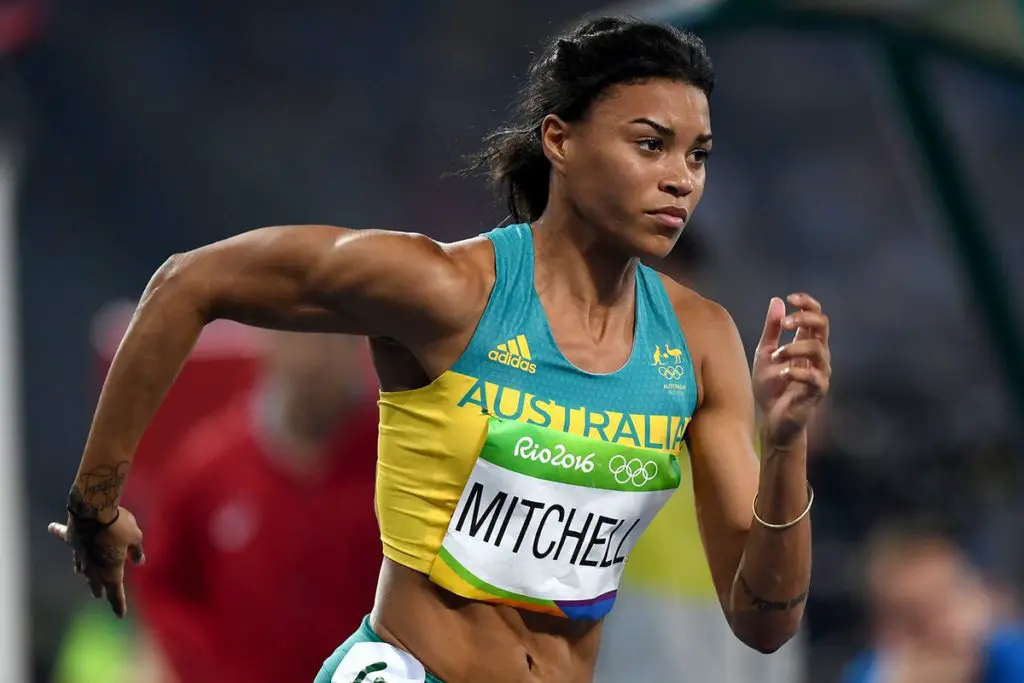

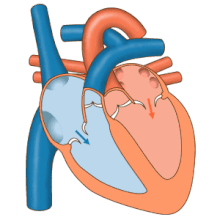



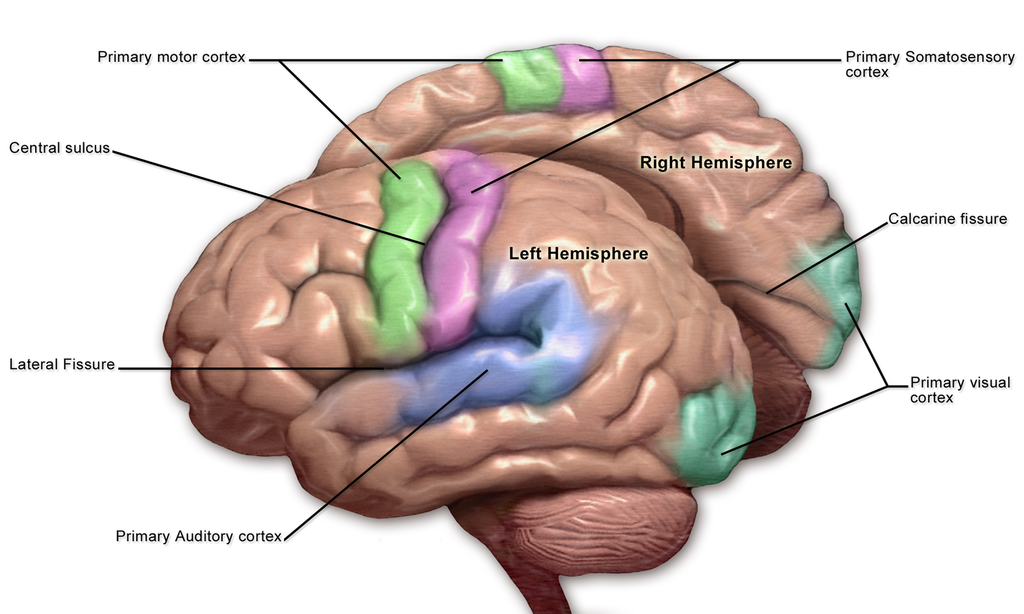

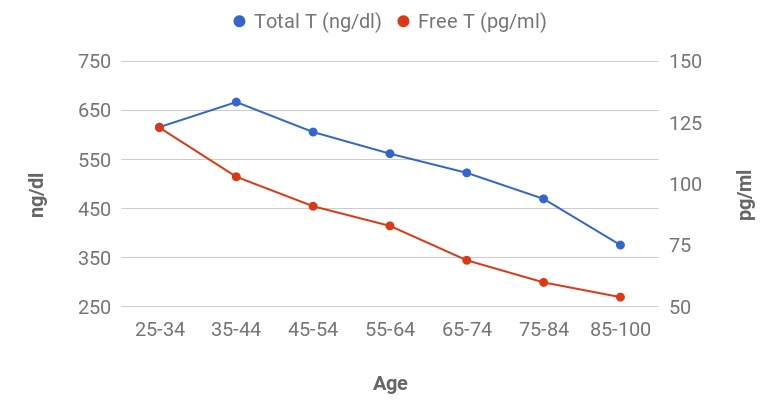



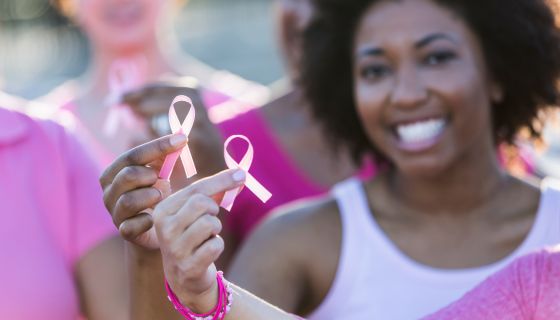











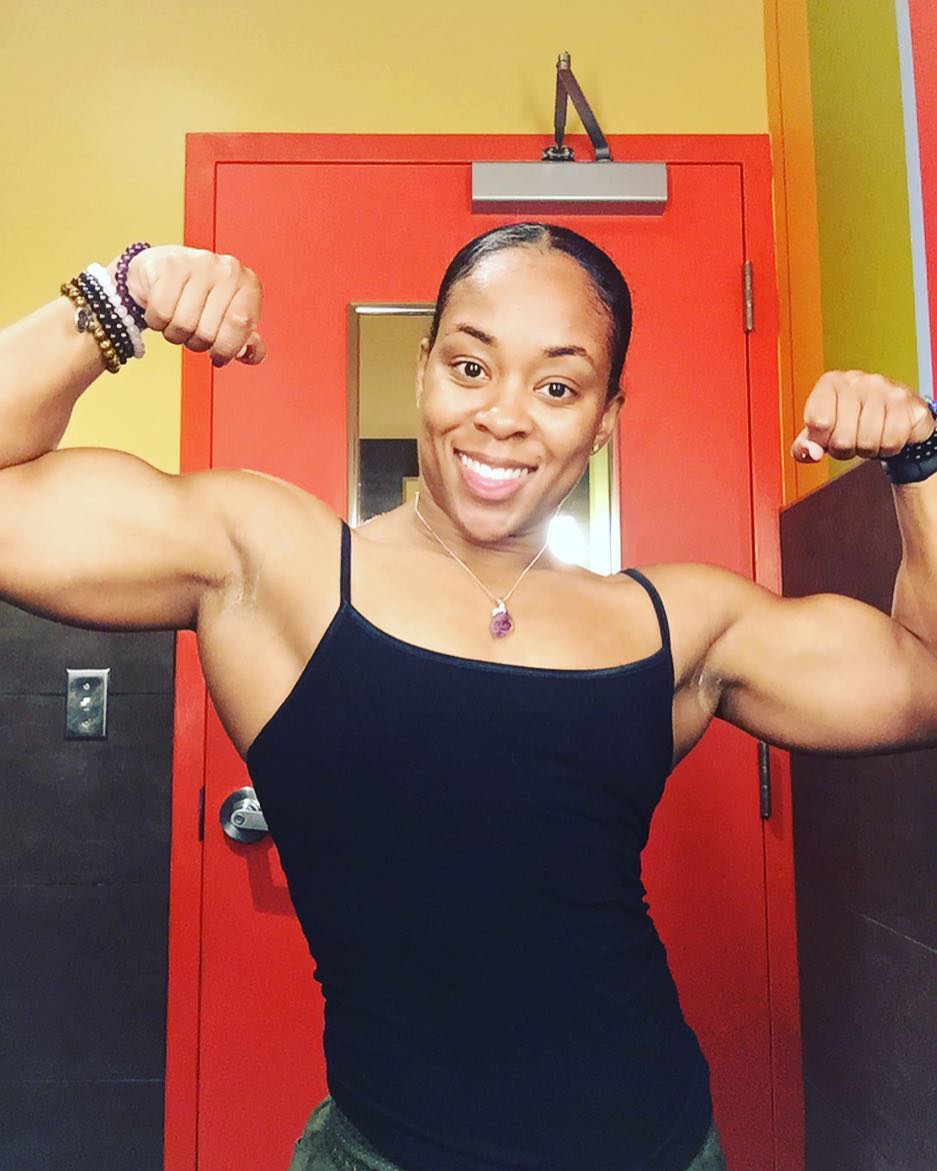
/GettyImages-505936413-56bc20ac3df78c0b1373ae26.jpg)


No comments:
Post a Comment